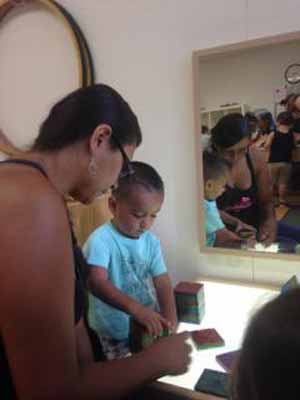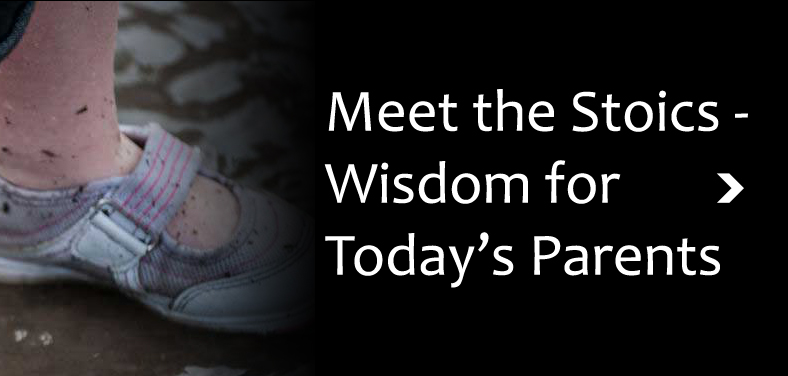“Information, Not Direction.”
Easy to say, not always easy to do, as following it requires intimacy with the second of our “3 Rs”: Respect.
Your child makes her own choices. Sometimes you frame them, but they are her choices. The sooner she starts making her own (age appropriate) choices, the better. Within the boundaries, you want to let them lead – let them make their own choices, and learn from the outcomes … just like in “real life!”
When talking to infants, toddlers, older children, or even other adults, try to give information, not direction.
Some examples:
| Direction | Information |
| “Don’t fall off the edge” | “The Edge is right there, next to your foot” |
| “Throw the ball to me” | “You are holding the ball” |
| “Stop Yelling” (with older child) | “I can only understand your inside voice” |
| “Give your Grandma a big smile” | “Grandma likes your smile” |
| “Be Careful! Don’t get hurt!” | “I am worried” |
| “Share the blocks with Johnny” | “It looks like Johnny wants to play with the blocks, too.” |
| “Eat more carrots” | “Here are some carrots” |
| “stop hitting your brother” | “It is not okay to hit your brother. If you can’t do something else, I will move you to the other room.” |
| “Don’t run into the road” | “This side of the sidewalk is safe. You may not go on that side of the sidewalk, because cars move there.” |
| “Don’t pull on the lamp cord” | “I am not going to let you pull on the lamp cord” (moves cord) |
| “stop playing with your food” | “You have a choice: you may eat, or leave the table” |
| “Do what I’m telling you to do” | “Be aware of this – and make your own choices!” |
| “Get in the car – Now!” | “It’s time to leave. You can get into your car seat, or I can help you.” |
Each of the statements above could be the basis of a lesson, and some certainly could be cause for vigorous debate. The underlying idea behind “Information, not Direction” is respect. Think of your own life, and relationships where you have less power. Do you prefer being told what to do, or making your own choices? By giving your child information, not direction, you are:
- Empowering them to make their own choices, to take care of themselves. Starting with the smaller things, when they are young, helps them do better on the bigger things, as they get older. They have agency – within their own life, they are in charge.
- Because you are trusting them, they know you have confidence in them. Through trial and error, they learn to trust their own judgement.
- Giving them information, instead of direction, helps them listen to you: The parent who shouts “be careful” every 20 seconds is tuned out as background noise. The parent who offers helpful information is minded.
- By giving them information you are talking about what is actually happening at that moment – you are entering their world. (And staying in the moment with them is a requirement, because that is where they live!)
Ultimately, you are empowering them. They will always be the most powerful person in their own lives. They are the decision makers.
The first words of Epictetus’ Enchiridion are “Some things are in our control and others not.” You want to start them to always make their own choices – strong from the start!
“Hold On!” you say. “Won’t empowering babies and small children to make their own decisions turn them into an uncontrollable snotty pants?”
A: (Quick Answer) No. Respect begets respect.
A: (Longer Answer) No. Because as you learn how to set boundaries for a child, you’ll see that the child who can make his own choices will tend to consider the consequences (using information, sometimes provided by you), and will act more responsibly, because they are learning how their choices have consequences. Setting boundaries is about clarifying choices for the child, so they can make their own decisions. [Children need and like boundaries – and we’ll talk about that, a lot, in class, and later].
Homework: Listening for Information / Direction
Listen to yourself, and to other parents. When is Information Provided? When is Direction given, and is there a way that information could be provided instead? Listen to adults in your life, too – when is there information, and when is there direction? How do you feel when directed, vs. when informed?
Trying to speak with Information, rather than Direction is a good easy start to being respectful. It helps you recognize what is going on in your child’s world, and helps you imagine what they area considering.
You may want to give it a try.




Add comment